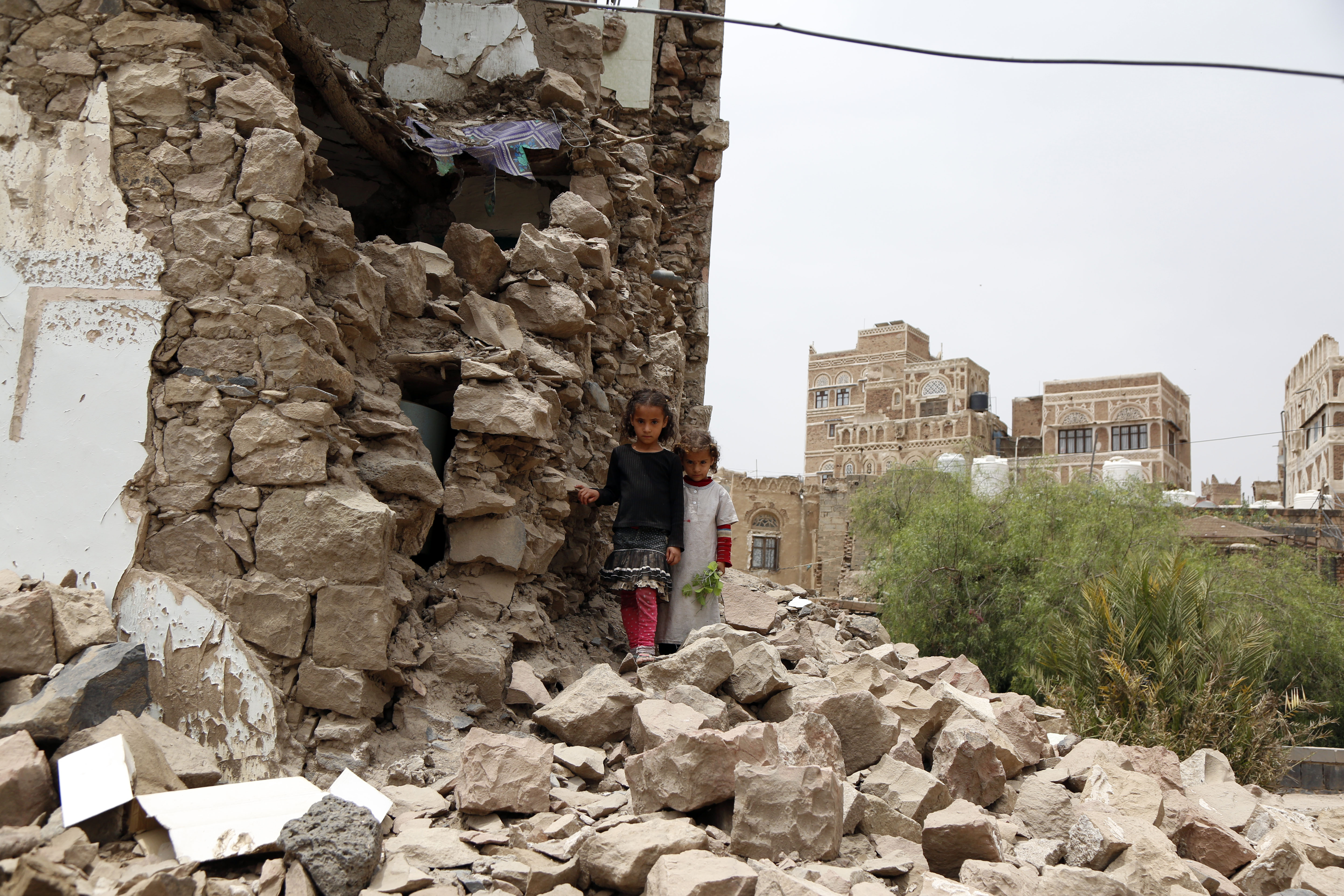
A man shouts slogans during a rally marking the 40th anniversary of the seizure of the former U.S. embassy in downtown Tehran, Iran, Nov. 4, 2019. (Photo by Ahmad Halabisaz/Xinhua)
by Xinhua writer Zhi Linfei
CAIRO, Dec. 22 (Xinhua) -- The year of 2019 could go down in history as one of the most tumultuous years in the Middle East, marked by the dangerous Gulf situation teetering on the brink of a war and a massive wave of protests sweeping across the region.
The past year witnessed some geopolitical changes in the volatile region, amid new turmoils, conflicts and bloodshed caused by a mix of decades-old rivalries, powers' competition and the U.S. interventionist policies.
With the so-called "maximum pressure" strategy, the United States continued to tighten its rope around the neck of Iran by escalating sanctions, in an unrealistic attempt to force Iran to return to the negotiating table on the nuclear issue under Washington's terms.
The Gulf tensions were well illustrated by the May attacks on four oil tankers by unknown sources in the Gulf waters. The most serious attack, however, directly targeted two major Saudi oil facilities in mid-September, which halved the kingdom's oil export.

U.S. President Donald Trump speaks to the media at the White House in Washington D.C., the United States, on July 18, 2019. (Xinhua/Ting Shen)
In June, U.S. President Donald Trump cancelled at the last minute an earlier order to hit Iranian military targets in retaliation for Iran's shooting down a U.S. drone. But the danger of war lingers with deployment of more U.S. troops and military assets in the Gulf amidst the tense U.S.-Iran standoff.
This year also saw the continous downfall of the Islamic State (IS) militant group, which lost Baghuz, its final territory in Syria, in March and its leader Abu Bakr al-Baghdadi in late October. This was hailed as another milestone in the war against IS since Iraq's announcement of victory over IS in 2017.
However, the new anti-terror progress has so far failed to bring about the long-expected peace, stability and security to the region. Instead, a strong wave of protests, some of which were violent, spread from North Africa to Sudan, Lebanon and Iraq.

Islamic State (IS) militants attend a surrender ceremony in Jalalabad city, capital of Nangarhar province, Afghanistan, Nov. 17, 2019. (Photo by Saifurahman Safi/Xinhua)
Many called it as the long-tail effect of the Arab Spring that started in 2011. Indeed, one common cause for the protests in 2011 and 2019 was local citizens' growing anger at and disillusion with the lack of basic services, growing poverty and widespread corruption following years of suffering from war, violence and bloodshed.
In Syria, the eight-year civil war took a turn in favor of the government led by President Bashar al-Assad, which made remarkable military gains to reclaim most of the country thanks to Russia's support and the U.S. retreat.
Trump's surprising decision to pull U.S. troops out of Syria helped bolster Turkey in its attempt to create a safe zone in northeastern Syria. The U.S. move was denounced as betrayal of Syrian Kurdish fighters, Washington's major ally in the fight against IS. Assad's forces have also tried to seize the opportunity to take back some territories once controlled by the Kurds.

Two girls walk on the rubbles of a historic building destroyed in an airstrike in the Old City of Sanaa, Yemen, on July 7, 2019. Many historic buildings in the Old City of Sanaa have been destroyed in a civil war between pro-government Yemeni forces and the Houthi rebels since the Houthi rebels overran much of the country militarily and seized all northern provinces in 2014. (Xinhua/Mohammed Mohammed)
In Yemen, the humanitarian crisis, created by a proxy war between the government supported by the Saudi-led coalition and the Houthi rebels backed by Iran, continued without catching much global attention. In Libya's capital Tripoli, the eastern-based national army launched an offensive since April in a bid to take over the city from the UN-backed government, causing a heavy toll on civilian lives and displacing many others.
Rolling out the economic portion of so-called Deal of Century in June in Bahrain, the United States put forward a 50-billion-U.S. dollar Palestinian investment proposal. But it was met with scant enthusiasm and flatly rejected by the Palestinians. The U.S. plan is a non-starter as long as the Trump administration refuses to adopt the two-state solution, the only viable path to achieve lasting Israeli-Palestinian peace.

Protesters gather along the Tigris river in Baghdad, Iraq, on Nov. 5, 2019. (Xinhua/Khalil Dawood)
These changes and tumultuous events in the Middle East well reflect a stark reality that peace remains elusive as ever in the region, where old rivalries between the United States and Iran, Iran and Saudi Arabia, as well as Israelis and Palestinians have continued to disrupt regional stability and security.
Moreover, powers' competition involving countries in and outside the region has worsened the situation.
From its 2003 invasion of Iraq to the 2011 armed intervention in Libya, from its biased stance on the Israeli-Palestinian peace process to its latest confrontation with Iran, the U.S. polices have been a major factor behind the chaotic situation in the region, with no exception in 2019.
The U.S.-provoked standoff with Iran in the past year threatened not only global energy security but also regional stability. Washington also eroded its moral standing by cutting its funding to the humanitarian agencies such as the UN Relief and Works Agency for Palestine Refugees in the Near East.
For the Middle East to achieve a just and lasting peace, the United States should end its hegemonic and interventionist policies, but would that be possible? ■



